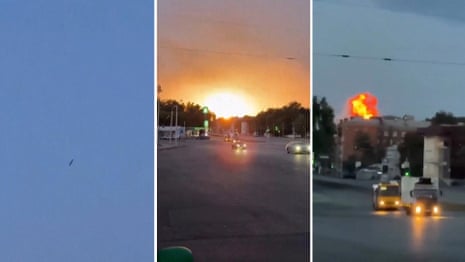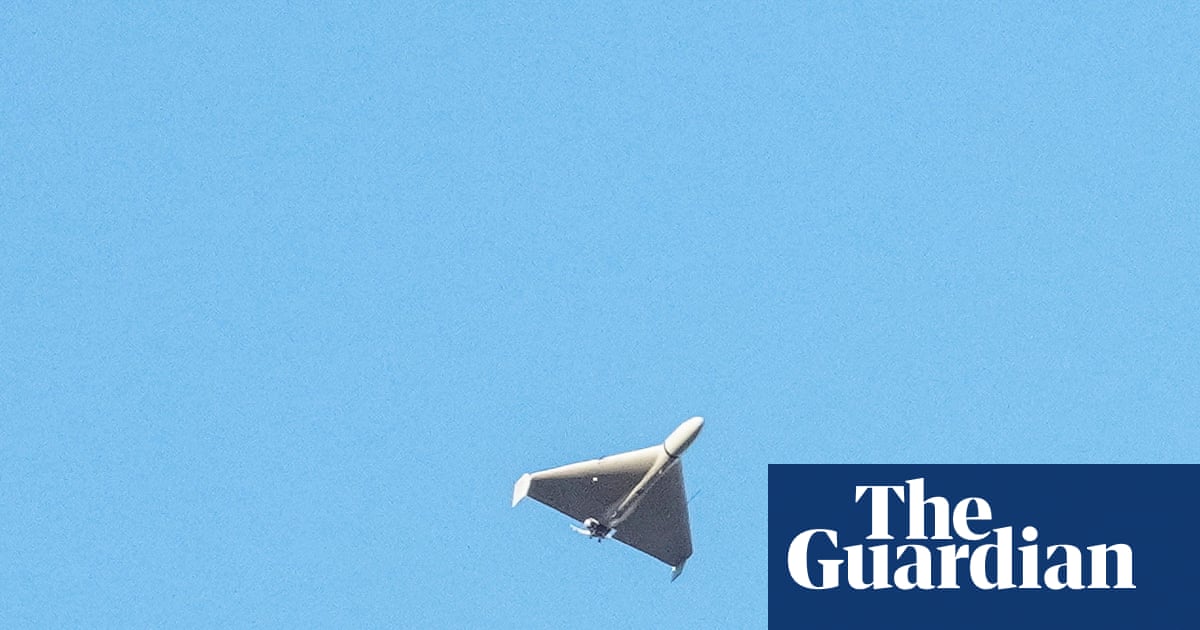The EU has agreed to move forward with plans for a drone wall at the heart of its eastern defences, as momentum grows for a €140bn loan to Ukraine, based on Russian frozen assets.
After a meeting with ministers from 10 mostly central and eastern European member states, plus Ukraine, the EU’s defence commissioner, Andrius Kubilius, said a drone wall to protect against incursions from the skies was an immediate priority and core element of the bloc’s eastern flank defences.
The issue has risen up the agenda after a spate of drone incursions in Denmark, Poland and Romania, as well as the violation of Estonian airspace by Russian fighter jets, while Russia continues its deadly bombardment of Ukraine.
Kubilius said it was urgent to have an effective detection system, including radars and acoustic sensors, as well as capabilities to intercept and destroy drones.
Speaking to reporters, the defence commissioner also acknowledged the potential mismatch in cost involved in drone defence. He said: “If you are using air and air missiles from your air fighter to shoot the drone, then you are using … [a] missile which costs 1 million to kill the drone which costs 10,000.”
Meanwhile, the Kremlin criticised the suggestion of shooting down Russian military planes over Europe as “reckless” and “irresponsible”, after Donald Trump suggested alliance members should do so.
 The moment a Russian missile strikes Dnipro in eastern Ukraine – video
The moment a Russian missile strikes Dnipro in eastern Ukraine – video
As defence talks were ongoing, a leaked proposal revealed growing momentum behind plans for a €140bn loan to Ukraine based on Russia’s frozen assets in Europe.
The European Commission believes it can generate a €140bn interest-free EU loan for Ukraine based on Russia’s immobilised central bank assets, without confiscating the funds, according to a leaked document seen by the Guardian.
While the EU already takes the profits from Russian assets frozen in the EU to generate funds for Ukraine, the original capital remains untouched. Germany, France and Belgium have resisted plans from central and eastern European countries to seize the assets, which are largely held at the Brussels-based financial institution Euroclear.
EU officials now believe they have found a legally safe way to loan Ukraine money based on the assets, predicated on the assumption that Russia will ultimately pay Kyiv reparations for the colossal damage inflicted during more than 1,300 days of full-scale war.
In a significant move, the German chancellor, Friedrich Merz, has swung behind such an idea, announcing his support for a legally secure financial instrument to secure Ukraine’s military resilience for several years via an op ed in the Financial Times.
Merz said ideally the plans would be backed unanimously by the EU’s 27 member states but suggested they could be approved by a majority, in an unspoken acknowledgment that the EU needed to consider ways to avoid a veto from Hungary’s Kremlin-friendly government.
The EU’s sanctions against Russia must be renewed every six months, giving Budapest significant leverage, although Hungary has never ultimately blocked sanctions.
EU officials also believe they have found a legal fix to avoid the unanimity requirement, meaning the cost of the loan would be ultimately paid by Russia, rather than member states, which would act as guarantors.
EU leaders are expected to discuss the drone wall and reparations loan at a Copenhagen summit next week, with the aim of agreements by the end of October.
